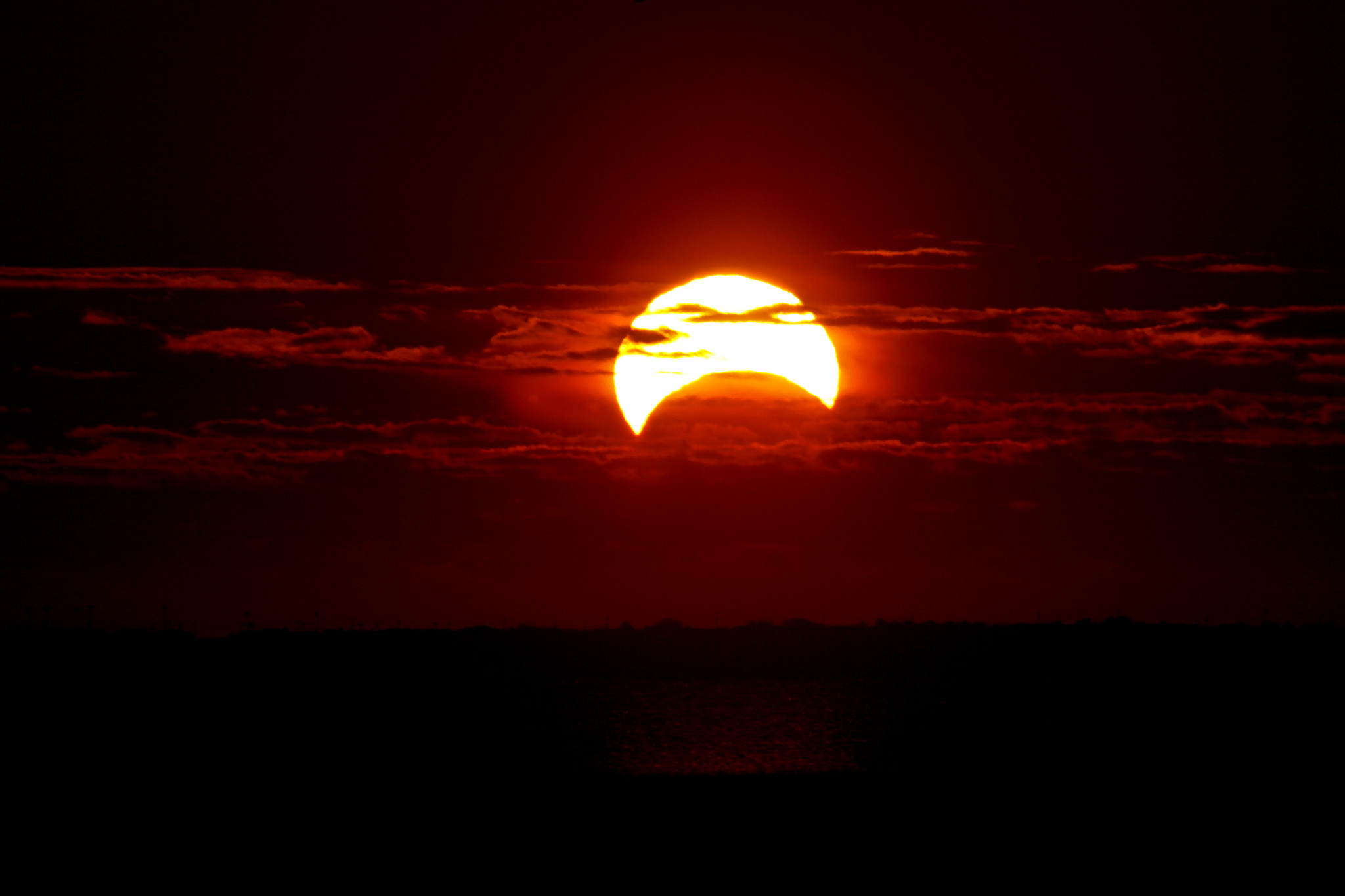To scale or not to scale, that is the question;
Whether ’tis nobler in the mind to suffer
The slings and arrows of disproportions
Or to take a ruler to that sea of troubles
And, by measuring, correctly depict them.
… Aye, there’s the rub.
Shakespeare aside, when you see a diagram depicting an eclipse, a caption oft accompanies it, clarifying that it’s not to scale. Why? Here’s why. Look at this diagram. This one is to scale.

This diagram of the Sun, Earth, and Moon is to scale. The night-time side of the Earth is not darkened in this diagram.
Look how much space there is between the Sun and the Earth! Can you even see the Moon? I programmed it into the plot; it’s just so small. A diagram that is to scale helps us understand the relation between the sizes of the celestial bodies and the relative distances between them. Nevertheless, it does not help us understand what is going on during an eclipse. This is one reason why we have diagrams that are not to scale.

This diagram of the Sun, Earth, and Moon is not to scale. This diagram shows the configuration of these celestial bodies during a solar eclipse.
Here we can see that the Moon is in between the Earth and the Sun, and the Moon’s shadow falls upon the Earth. This doesn’t happen every time the Moon passes between the Earth and Sun because the shadow usually flies over the North Pole or under the South Pole. During two different intervals of about 33 days each year, the Moon’s shadow could fall upon the Earth. Only during these intervals can we get eclipses (both lunar and solar). Whether an eclipse happens depends on the Moon’s phase. Which type of solar eclipse occurs (total, annular, or partial) depends on the relative distances between the Earth, Moon, and Sun. These are constantly changing because orbits are not perfect circles but ellipses. I hope to go into further detail about this in a future post. This should at least help us understand why to scale diagrams and not to scale diagrams are both helpful, but for different reasons.

